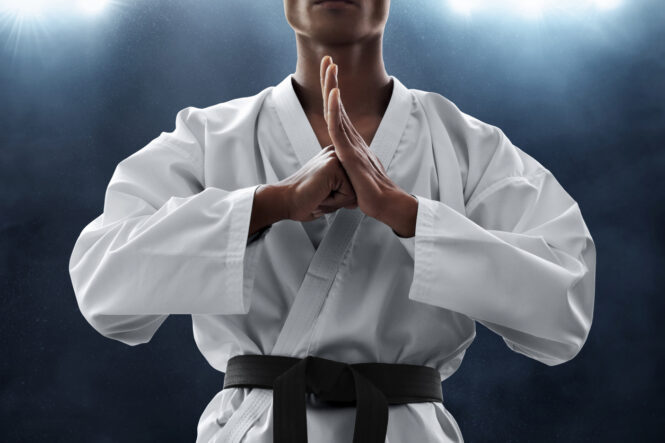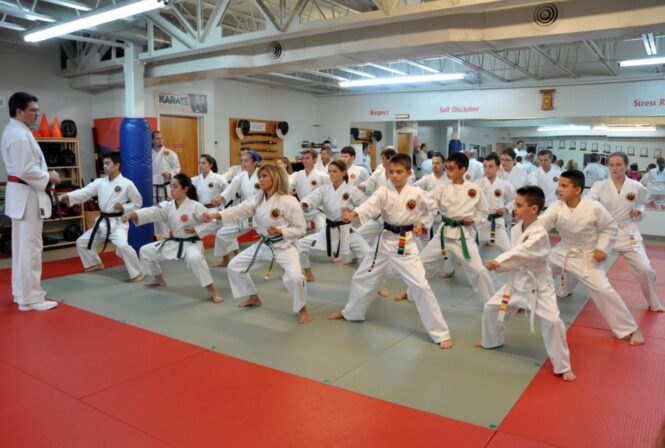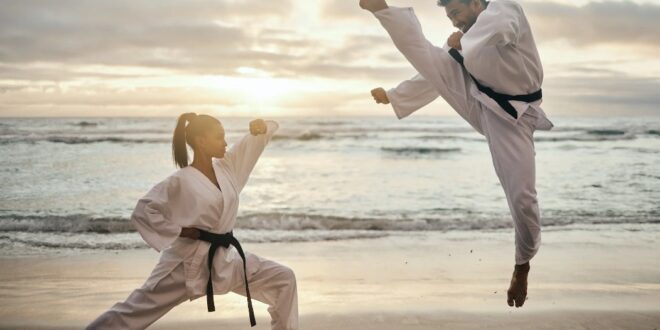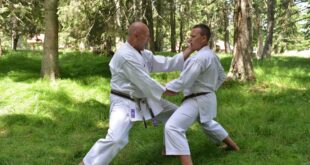Advancing in karate is a journey that often mirrors the complexities of life itself. Each colored belt symbolizes not just a level of mastery but also dedication, sweat, and countless hours of practice. Imagine standing on the dojo mat, heart racing, with the weight of a new grading exam pressing against your chest.
It’s a moment where those early mornings and late nights of training come rushing back, fueling a fire of determination.
This commitment to the craft transforms not only physical abilities but also fosters a sense of purpose and personal growth. Understanding the structure of karate ranks and the pathway to advancement is crucial for any practitioner eager to enhance their skills and experience the profound rewards of karate progression.
This article delves into the intricacies of karate belts, ranks, and what it takes to elevate one’s practice.
Karate Belt System
The belt system serves as a structured framework for students to visualize their progress in martial arts. It traces its roots back to the Kyu and Dan ranking system established in Kodokan Judo. This system was adopted by Gichin Funakoshi, the founder of modern karate, during the early 20th century.
Initially, the karate belt history focused on two belts—white, representing a beginner, and black, signifying mastery. Over time, this system expanded, incorporating various belt colors to depict different skill levels.
History and Evolution of Belts
In the early days, the simplicity of the white and black belts meant that progression in martial arts was straightforward. As karate became more popular and widespread, instructors recognized the need for a more elaborate ranking system.
This evolution led to the introduction of multiple belt colors, forming a deeper connection between the student’s journey and the respective ranks they achieved. Today, karate schools typically implement a sequence of nine belts which symbolize progression from novice to expert.

The Color-Rank Association
The belt colors not only represent the level of expertise but also the various stages of learning. Each belt holds specific significance, marking a student’s journey. A typical progression might include:
- White ─ Beginner stage, symbolizing purity and a fresh start.
- Yellow ─ Represents a deeper understanding of basic forms.
- Orange ─ Signals advanced practice and improved skills.
- Green ─ Demonstrates substantial knowledge of techniques.
- Blue ─ Indicates the student has begun to learn expert techniques.
- Brown ─ Reflects a preparation to become an expert, focusing on refinement.
- Black ─ Signifies mastery and the culmination of years of training.
This structured karate belt system not only aids students in gauging their progress but also instills motivation as they work towards their next rank. As students advance, they gain not only new technical skills but also a deeper understanding of the martial art itself.
How to Advance in Karate
Advancing in karate requires a commitment to consistent training and meeting specific requirements that vary by dojo or karate organization. Understanding what is needed for progression can significantly enhance a student’s journey through the ranks.
Requirements for Progressing Through Ranks
Each rank necessitates fulfilling particular criteria. Common requirements include:
- Spending a minimum duration at the current rank.
- Demonstrating proficiency in essential techniques, known as Kihon.
- Executing forms, referred to as Kata, accurately.
- Engaging in sparring, which is called Kumite, to showcase practical skills.
- Receiving approval from instructors based on demonstrated improvement.

Training Consistency and Dedication
Consistent training is pivotal for mastering the skills required for advancement. Practicing several times a week helps reinforce learning and builds confidence in executing techniques. Students often engage in training over several years, typically requiring four to six years to reach the black belt level.
This dedication not only fosters karate progression but also deepens the understanding of karate as a discipline.
Karate Grading Examinations
Karate grading examinations serve as critical assessments in a student’s martial arts journey. These tests evaluate not only physical skills but also theoretical knowledge. The preparation process is key to success in these karate grading events.
Preparation for Grading Tests
Effective preparation for tests involves several components. Students should focus on the following elements to enhance their readiness:
- Consistent practice of fundamental techniques and katas.
- Reviewing knowledge specific to the belt rank, including terminology and history.
- Participating in mock tests to simulate the examination environment.
- Seeking feedback and guidance from instructors to identify areas needing improvement.
Grading Criteria Overview
The karate grading criteria outline the expectations for each examination. Important factors include:
| Criteria | Description |
| Minimum Time at Current Rank | Students must spend a specified period at their current belt level before testing for advancement. |
| Demonstrated Techniques | Students must showcase proficiency in essential techniques required for their next rank. |
| Instructor Approval | Qualified instructors assess and approve each student’s readiness based on performance and knowledge. |
Understanding these karate grading criteria can significantly aid students in their progression toward higher belt ranks, fostering both confidence and skill acquisition. Each element plays a vital role in a successful karate grading journey.

Mastering Techniques for Advancement
In karate, mastering techniques and forms are pivotal for progression. The intricate details of karate techniques, often referred to as Kihon, encompass fundamental movements, strikes, and stances that establish the groundwork for effective practice.
Practitioners must dedicate themselves to repeating these movements to gain precision and fluidity. Meanwhile, karate forms, known as Kata, serve as structured sequences that reinforce these techniques while promoting discipline and mental focus.
Importance of Karate Techniques and Forms
The role of karate techniques and forms extends beyond physical prowess. Karate techniques are essential for developing muscle memory, which is crucial for executing strikes and defenses instinctively during sparring. Karate forms contribute to a deeper understanding of body mechanics and timing, essential elements for success in both training and competition.
Incorporating Sparring into Training
Karate sparring, or Kumite, plays a significant role in practical application. Engaging in sparring sessions enhances reflexes, strategic thinking, and the ability to adapt to dynamic movements from opponents. Regular integration of sparring in karate training leads to the cultivation of a well-rounded combat proficiency, making it indispensable for advancement through belts.
By effectively balancing karate techniques, karate forms, and karate sparring, practitioners can elevate their skills and readiness for upcoming challenges.
 Imagup General Magazine 2024
Imagup General Magazine 2024

